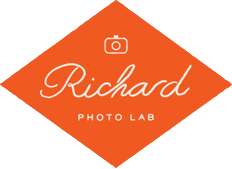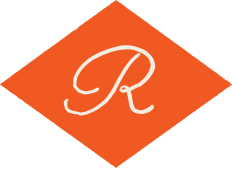How to Shoot Large Format Film: An Introduction

You've shot 35mm film. You've shot medium format film. And now you wanna up your format, huh? Craving that slowed down, process driven, highly-technical side of film photography? We hear you loud and clear! Besides developing and scanning large format film, we've got a whole blog post introducing you to the ins and outs of large format—and then you can decide if bigger is really better for you!
Shooting large format photography is really getting back to the roots of photographic history. It’s the OG way of shooting film, and we bet your bottom dollar that a good chunk of the famous photographs you've seen were likely shot on large format film. We know that might sound like a stretch, but everyone from Ansel Adams, to Richard Avedon, to Elliot Porter, to Edward Weston, to Sally Mann all shot/shoot with large format cameras in order to get their iconic imagery.
 Large format film image by Brian Lahiere.
Large format film image by Brian Lahiere.
"Large format" refers to any film (and camera) type in which a single frame is 4×5 inches or larger. Other common sizes include 5×7, 8×10, and 11x14. This film is not on a roll, but rather it is in individual sheets (which is why it is also referred to as sheet film) that are loaded into film holders. The holders are then loaded into your camera. So, one exposure is one sheet of film.
 Large format film image by Steve Moulton.
Large format film image by Steve Moulton.
LARGE FORMAT CAMERAS
There are two different kinds of large format cameras: monorail cameras and field cameras.
Monorail cameras might be what you learned on if you were lucky enough to shoot large format in high school or college. They are BIG and precisely what the name sounds like—they sit on a rail that holds the camera and controls the length of the bellows (more on that later). You typically use this kind of large format camera when shooting in a studio because it has to be set up on a tripod in order to work. It is also quite hefty and cumbersome, so it's definitely not the easiest camera to take if you are hiking up a mountain!

The camera you want to take up the mountain would be a field camera. These aptly-named cameras were made for portability and ease of use. They fold open and closed and can fit inside your backpack.
 Large format film image by Ozem Ellis.
Large format film image by Ozem Ellis.
LARGE FORMAT CAMERA ELEMENTS
Bellows
The flexible leather bellows adjust the distance between the lens and the film, effectively acting as a focusing ring for your camera. Focus is adjusted near to far by sliding the position of the bellows. Because of this, you will need to increase the amount of exposure to compensate for the bellow. Google "bellow compensation" for tons of great resources to calculate how much overexposure you need.

Tilt, Rise, Swing, & Shift
These adjust the film plane. With traditional small format cameras, the film plane is always parallel to the film, but with a large format camera the film plane can be adjusted as far as 90 degrees. This allows for extreme depth of field in your scene.

Lens
Lenses for large format cameras have smaller available apertures, like F/64, f/45/ and f/90. These are most utilized in landscape photography when you want maximum depth of field throughout your scene.

Ground Glass
At the back of the camera, the ground glass is the viewfinder of the camera.
Film Holder
One holder holds two pieces of film, which is two exposures. Front and back!
 Large format film image Brian Lahiere.
Large format film image Brian Lahiere.
FILM STOCKS
Currently you can purchase these films in large format sizes:
- EKTAR 100 (4x5) - Shop now!
- Portra 160 (4x5, 8x10) - Shop now!
- Portra 400 (4x5, 8x10) - Shop now!
- TRI-X 320 (4x5, 5x7, 8x10) - Shop now!
- TMAX 100 (4x5) - Shop now!
- TMAX 400 (4x5) - Shop now!
- HP5 (4x5, 5x7, 8x10) - Shop now!
- FP4 (4x5, 5x7, 8x10) - Shop now!
- Delta 100 (4x5, 8x10) - Shop now!
 Large format film image by Ozem Ellis.
Large format film image by Ozem Ellis.
MUST-HAVE TOOLS FOR LARGE FORMAT FILM PHOTOGRAPHY
External Lightmeter
Large format cameras are all manual. They don't even have batteries. Thus, no internal light meter. So you absolutely MUST have an external light meter on hand to figure out your exposure settings. Learn all about metering for film photography here!
Complete Darkness
You must have a film changing tent or completely dark room (or closet) to load your film into holders before shooting.
Exposure Log Journal
With large format photography, you shoot one holder (two sheets of film front and back) at a time, and you might have different development instructions for each sheet of film. You will want to make sure you record all that crucial information into a journal so you know how to develop when you get home or send to the lab!
Tripod
Large format cameras are sizable and have a lot of controls. You will need a tripod to get a handle on all these elements.
Cable Release
Exposures for large format cameras can be very long (in the seconds), so a cable release will help minimize camera shake. These cameras were also made to be used with cable releases.
Patience & Practice
This craft will take time to master. You can't rush—even taking just one shot is a test of stoicism. It will take persistence to become proficient with a completely different kind of camera system—this is not like shooting 35mm or medium format film. It is a completely different ball game!
 Large format film image by Steve Moulton.
Large format film image by Steve Moulton.
PROCESSING & SCANNING LARGE FORMAT FILM
We got you! Here at Richard Photo Lab, we can develop and scan almost all C41 and B&W large format film. Keep in mind that the way we handle large format is completely different from roll film. For scanning, we use high resolution drum and flatbed scanners—Noritsu and Frontier scanners can only scan roll film, not sheet film. Reach out to our awesome customer service team to learn more about these services!
 Large format film image by Steve Moulton.
Large format film image by Steve Moulton.
This blog post is just an introduction to large format film photography. Learning how to shoot or use any specific cameras takes a verrrrryy looonnng time, so we strongly recommend going on YouTube or taking an online class to advance your knowledge in this field.
Large format has been the preferred medium for many photographers because in the simplest of terms, it produces the biggest negative possible and gives you the most control. In film photography, the size of the negative directly corresponds to the level of detail in your final image—so there is a case to be made that large format is the absolute best way to shoot film. But, we will let you find that out for yourself...

